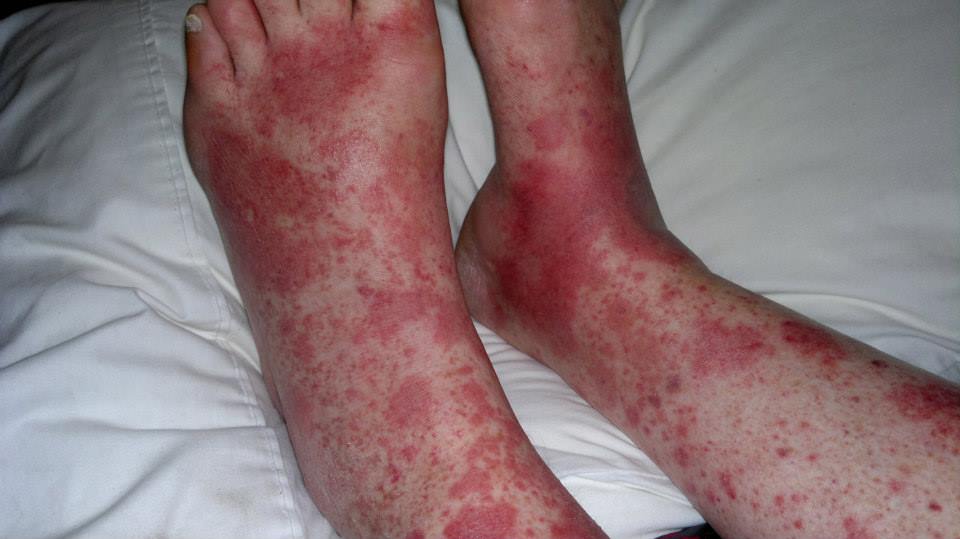CRYOGLOBULINEMIA

What is cryoglobulinemia?
Cryoglobulinemia is a blood disease caused by the presence of antibodies that clump together at cold temperatures. These clumped antibodies deposit in the skin, vessels, and occasionally in multiple organs. Lesions are commonly located on body parts easily exposed to low temperatures such as the tips of fingers or toes, ears, nose, arms and legs. Skin eruptions can be accompanied by chills, fevers, diarrhea and shortness of breath. Cutaneous findings include:
- Blood pooling under the skin of cold-exposed sites (purpura), this appears red but is not inflamed.
- Cyanosis of the finger-tips, toes, arms or legs. Cyanosis is term given to skin that appears blue due to decreased blood flow and oxygen delivery.
- Palpable bruises and blisters, these lesions feel bumpy when touched.
- Lacy appearance of arms and legs called “livedo reticularis.”
- Hives (urticaria) that are caused by cold-exposure.
About 30-60% of individuals with cryoglobulinemia will have multiple organs affected leading to kidney disease, high blood pressure, sensory loss, joint pain and enlargement of the liver and spleen. These findings are a result of antibody complexes getting lodged in small blood vessels, decreasing blood supply and causing end-organ damage.
What causes cryoglobulinemia and who is affected?
Cryoglobulinemia is caused by an abnormal immune response to cold temperatures. Cold temperatures activate antibodies and immune cells causing them to clump together and form complexes that deposit in the body. There are different types of cryoglobulinemia and these are categorized based on the components of the complex. The disease is seen in individuals with blood cancers such as multiple myeloma, B-cell lymphoma, those with inflammatory disorders such as lupus, rheumatoid arthritis, Sjogren syndrome and those with certain infectious diseases such as hepatitis, syphilis, endocarditis and mononucleosis. Cryoglobulinemia is diagnosed by a blood test that looks for “cryoglobulin” formation after exposure to cold.
How is cryoglobulinemia treated?
Cryoglobulinemia is a secondary condition therefore treatment is focused on the underlying disease.
References:
Wolff K, Johnson, RA. Fitzpatrick’s Color Atlas and Synopsis of Clinical Dermatology. Sixth Edition. 2009.


